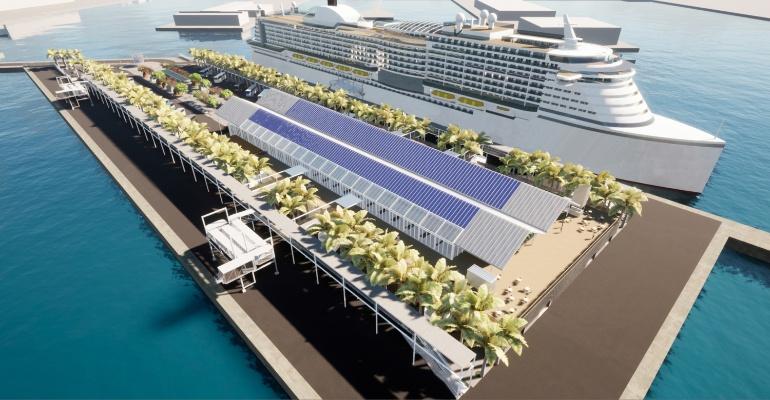The works have been entrusted to Satocan, a company located in the Canaries which has been carrying out maritime construction works for over four decades.
Las Palmas de Gran Canaria
The biggest project will be in Las Palmas de Gran Canaria, one of Spain’s busiest cruise ports. The terminal, located at Santa Catalina Pier, will consist of a two-storey 14,000 m2 building, complete with three boarding bridges. It will be able to provide comprehensive services for up to four cruise ships simultaneously with shopping and restaurant areas, and be able to support transit calls and homeport operations.
Lanzarote
In Lanzarote, works will take place at the two cruise-dedicated piers at Arrecife with the aim of ensuring the destination can handle several cruise ships at once.
A one-storey, 1,106 m2 building will serve as the cruise terminal in Naos and provide services for both transit and homeport operations.
The cruise terminal at Mármoles will take the form of a modern modular facility spanning 556 m2, which can cater for up to three cruise ships at once. This installation will be supported by a satellite cruise terminal of 426 m2 where several auxiliary services will be available to passenger and crew members alike.
Fuerteventura
The terminal at Puerto del Rosario, in walking distance to the heart of Fuerteventura’s city center, will be of modular design and measure 924 m2. A restaurant with an open terrace will number among the wide range of services set to be introduced.
Environmental considerations
GPCI has opted to use recycled and eco materials to minimise waste, thus preserving natural resources and habitat, and reducing environmental impacts.
Cutting-edge technologies and innovative practices will be incorporated to achieve a minimal carbon footprint and maximise the use of renewable resources.
The planned constructions will be eco-efficient and sustainable, functional in design, and combine solar energy and recycled materials, with effective waste management.
It is anticipated by GPCI that the terminals will have a positive impact in each city, resulting in tourism growing on the islands, and sustainable and responsible economic development increasing.
Meeting accessibility needs
For passengers with reduced mobility, all three terminals have been designed to meet accessibility needs, and accessible spaces will be incorporated to ensure a positive experience for all passengers.
Advanced security measures will be implemented and terminals will have the capacity to adapt to new demands set by the industry which may arise in the future.
Copyright © 2024. All rights reserved. Seatrade, a trading name of Informa Markets (UK) Limited.
Add Seatrade Cruise News to your Google News feed.  |

